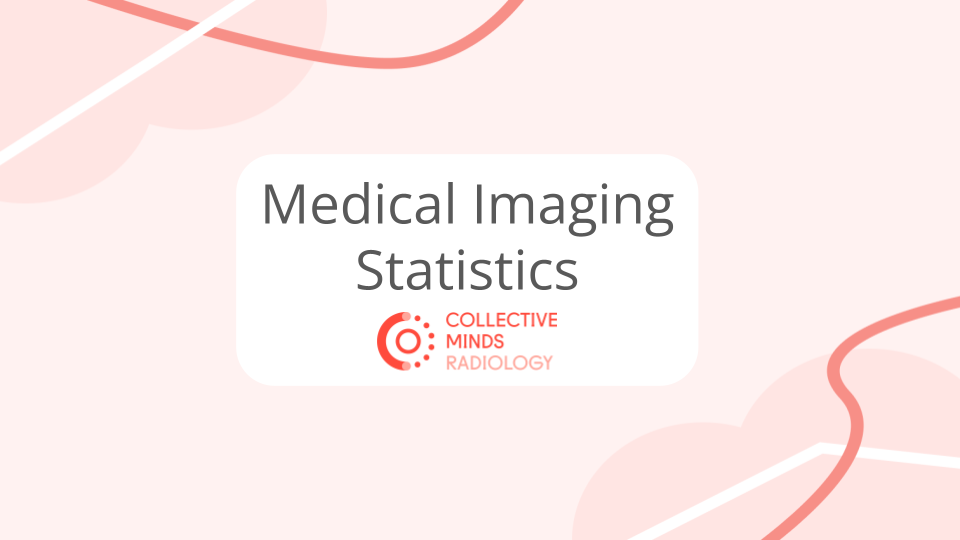Diagnostic Errors in Radiology: Statistics, Types, Causes, and Prevention Strategies

Diagnostic errors occur in approximately 3-5% of radiological studies, affecting millions of patients annually. This comprehensive guide will help you understand the nature of these errors and, more importantly, how to prevent them.
Understanding Diagnostic Errors in Radiology
Before diving into specific types of errors, it's important to understand the complex environment in which radiologists work. Every day, we face increasing workloads, time pressures, and the challenge of maintaining unwavering attention across hundreds of images. This context is crucial for understanding why errors occur and how we can prevent them.
"Errors and discrepancies in radiology practice are uncomfortably common, with an estimated day-to-day rate of 3–5% of studies reported, and much higher rates reported in many targeted studies,"
according to a 2016 study in Insights into Imaging.
Read Also: Understanding Good Clinical Practice (GCP) in Imaging
Types of Diagnostic Errors
The classification of diagnostic errors in radiology isn't just academic – it's essential for developing targeted prevention strategies. Through my years of practice and research, I've observed how these errors typically fall into two main categories, each with its own unique challenges and solutions.
Perceptual Errors
These errors, accounting for 60-80% of all diagnostic mistakes, occur when we fail to see what's actually present in the image. The challenge isn't just about looking – it's about truly seeing and recognizing patterns.
"In radiology, the most common problems leading to medical malpractice lawsuits are due to failure to diagnose. This means oversight of abnormalities or misinterpretation of radiologic images,"
reports the American Journal of Roentgenology.
Cognitive Errors
Cognitive errors represent a complex challenge in radiology interpretation. These errors stem from how we process information and make decisions, often influenced by various biases and external pressures.
Read Also: Collaborative Diagnostics: How Collective Minds Radiology is Redefining Peer Review
Prevention Strategies
In my practice, I've found that preventing diagnostic errors requires a multi-faceted approach. It's not just about individual skill – it's about creating systems and processes that support accurate diagnosis.
1. Structured Reporting Systems
The implementation of structured reporting has revolutionized how we document and communicate findings. Through standardized templates and terminology, we've seen significant improvements in report clarity and reduced communication errors.
2. Technology Integration
Modern radiology practices are increasingly leveraging technology to enhance diagnostic accuracy. From AI-assisted detection systems to advanced visualization tools, these technologies serve as valuable second opinions in our daily practice.
"there is growing recognition of the limitations of radiologists in image perception and cognition involving a series of complex diagnostic decisions that cause the inevitability of errors."
notes a 2023 study in PMC.
3. Quality Assurance Programs
Quality assurance in radiology goes beyond basic peer review. It involves systematic approaches to error detection and prevention, including regular case reviews and performance monitoring.
Read Also: DICOM Metadata Extraction: A Guide for Medical Imaging Professionals
Impact of Workload and Environment
The relationship between workload, fatigue, and error rates is something every radiologist needs to understand and actively manage.
According to a 2020 study in Radiology,
"radiologists working off-hours make clinically important body CT interpretation errors more frequently at night (3.0% vs 2.0%)."
This finding resonates with my personal experience and highlights the importance of managing reading schedules effectively.
Workload Management Strategies
In my practice, we've implemented several evidence-based strategies to combat fatigue-related errors:
- Scheduled breaks between reading sessions
- Optimal lighting conditions in reading rooms
- Regular rotation of complex and routine cases
- Implementation of structured peer review systems
Legal and Professional Implications
The reality of diagnostic errors extends beyond patient care to professional liability. As radiologists, we must understand these implications while maintaining our focus on patient care. Research shows that approximately 75% of medical malpractice lawsuits against radiologists relate to diagnostic errors, making this a critical area for risk management.
Risk Mitigation Approaches
My experience has taught me that the best defense against legal challenges is a combination of:
- Thorough documentation practices
- Clear communication with referring physicians
- Regular participation in quality improvement initiatives
- Ongoing professional development
Future Directions in Error Prevention
The landscape of radiology is rapidly evolving, and with it comes new opportunities for error prevention. I've witnessed remarkable changes in how we approach diagnostic accuracy, particularly with the integration of artificial intelligence and advanced visualization tools.
Artificial Intelligence Integration
While AI shows promise in supporting radiological diagnosis, it's important to maintain realistic expectations. Recent studies show mixed results regarding AI's impact on false-positive rates, though certain applications have demonstrated significant benefits in specific contexts.
Summary
Throughout my career, I've learned that preventing diagnostic errors in radiology requires a comprehensive approach that combines:
- Understanding of error patterns and their causes
- Implementation of evidence-based prevention strategies
- Continuous quality improvement
- Effective use of technology and support systems
FAQ
Q: What is the most effective way to reduce diagnostic errors in radiology? A: Based on current evidence and my experience, a multi-faceted approach combining structured reporting, peer review, and appropriate use of technology yields the best results.
Q: How does fatigue impact diagnostic accuracy? A: Research shows that fatigue significantly increases error rates, with studies demonstrating up to 45% increased viewing time per case and decreased diagnostic performance during extended reading sessions.
Q: What role does AI play in preventing diagnostic errors? A: While AI shows promise as a supportive tool, its effectiveness varies by application. It's best used as part of a comprehensive quality assurance program rather than as a standalone solution.
Reviewed by: Mathias Engström on November 6, 2024




